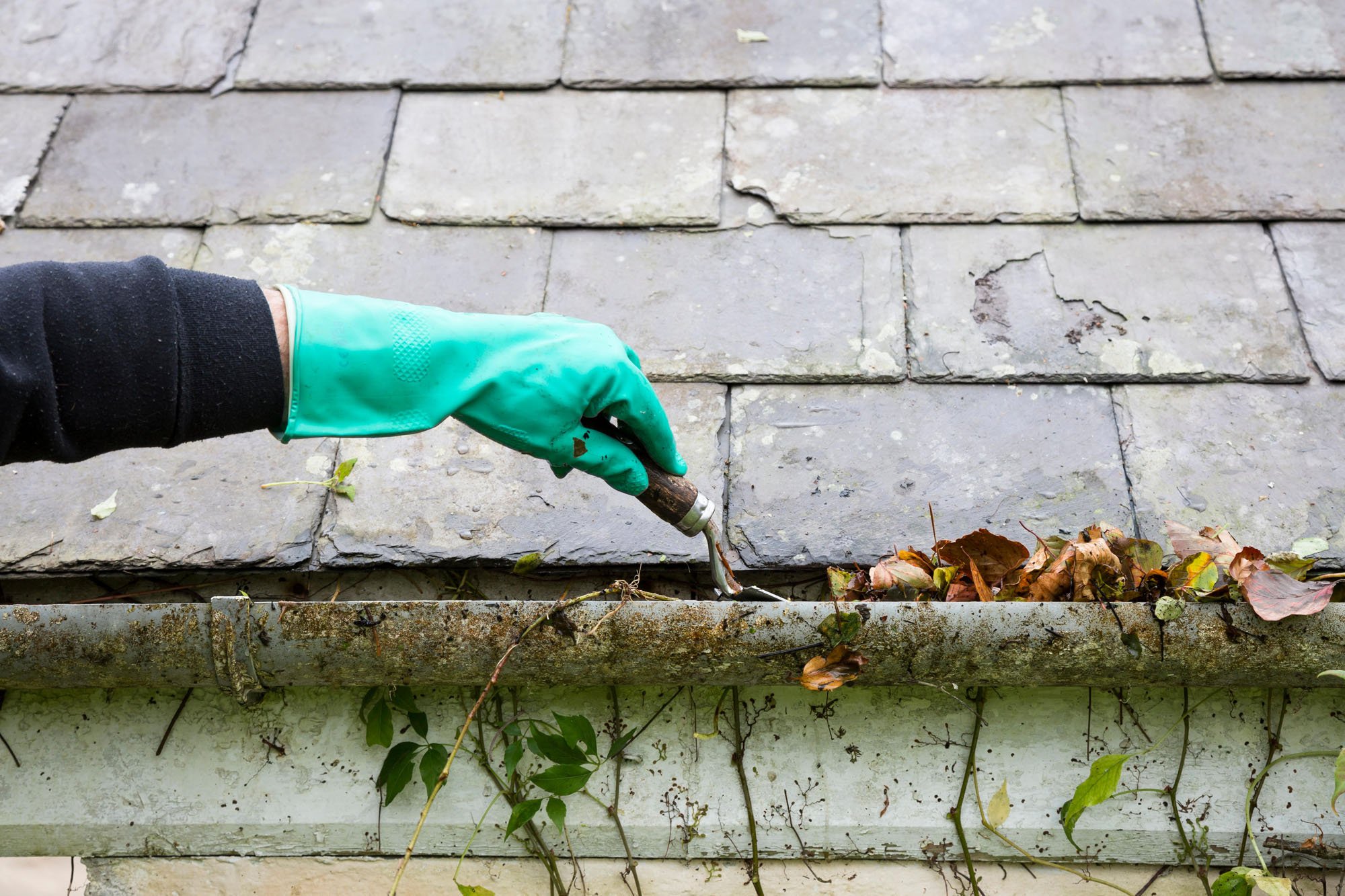Maintenance Checklist
The starting point for regular maintenance is to draw up a checklist to inspect your home in a logical sequence.
Our list below is not exhaustive, but it covers the most critical elements. Use binoculars to check high level areas like the roof or chimney from the ground if safe access is not available.
Rainwater gutters, channels, hopper heads and pipes
- Inspect and clear any debris or blockages after heavy leaf fall, at least every autumn and preferably more often
- Are there any leaking joints?
- Does rainwater cascade over the gutter from the roof? Inspect while it is raining and note any leakages
- Does the water pool in any one area?
- Do the gutters slope correctly towards outlets? You can check this by pouring water into the gutter and checking that it drains away
- If gutters are fixed to timber fascia boards, check the condition of fascia boards and at the same time soffit and barge boards
- Check the rear side of pipes with a mirror and look for cracks and corrosion
- Are pipes securely fixed to the wall?
- Are there any signs of staining or algae growth, or any washed-out mortar joints, on the wall behind the pipe?
Drainage gullies
- Inspections should be carried out every autumn and preferably more often
- Check that drainage gullies are free from silt, debris, vegetation and other objects
- Make sure that all gully inlets are covered by a grating
Pitched roof coverings
- Inspect twice a year and after storms or high winds
- Debris on the ground will give an indication of roof problems
- Are there any loose, slipped, broken or missing slates or tiles?
- Is there a lot of moss? This could potentially block gutters and pipes or stop water running off the roof. Retained water in moss can cause thatch to rot
- Look for signs of dampness on ceilings or in loft spaces as a possible indication of roof leaks
Flat roof coverings
- Inspect twice a year
- Are there any splits, tears, cracks or holes in the roof coverings?
- Look for signs of dampness on ceilings or in roof voids as a possible indication of roof leaks
Chimneys
- Are the chimney stacks or chimney pots leaning?
- Are any chimney pots out of position?
- Is there any vegetation growing out of the chimney?
- Check for cracks, loose or bulging stones or brick, and badly eroded or open joints
- Arrange for a close inspection promptly if you find any of the above
Ridge, hip or valley tiles
- Are any of the tiles missing, lifted or slipped?
- Check to see if there are any open gaps between tiles and arrange for close inspection if necessary
Flashings
- Are all flashings still fixed into the wall, chimney or roof covering?
- Check to ensure that the joints, where they are fixed, are in good condition
- Ensure that flashings are dressed down and have not been blown or moved away from the surface of the wall
Exterior walls
- Is there deep erosion or missing pointing in the joints?
- Are there any cracks?
- Look for defects in stonework, brickwork and rendering such as cracks, deep erosion, missing pointing or crumbling
- Is there any green staining, algae or vegetation that might suggest issues with drainage systems, flashings or weathering details
Base of walls
- Check to ensure that ground levels are at least 150 millimetres below the level of any known damp-proof course or 150 millimetres below internal floor levels
- Ensure that vents are not obstructed
- Remove plants and vegetation growing on or close to the building if they are causing damage
- Is there any green staining, algae or vegetation that might suggest issues with drainage systems or ground water?
Windows and doors
- If made of timber or metal, is the paintwork in good condition and is there any decay?
- Check for bare timber, especially on thresholds, sills and lower and underside areas of window sashes
Building services, pipes and flues
- Check water and heating systems for leaks
- Ensure that pipes are lagged
- Electrical and gas installations should be regularly inspected by certified experts
- Inspect chimney flues and ensure that they are clear from obstruction and do not leak
- Check for signs of leaking mains water supply pipes and stop valves near the building
- Test fire alarms, smoke detectors and carbon monoxide alarms





